
UK hoteliers face a tough year in 2020 with a growth in rooms supply increasing competition and dampening revenues, despite underlying demand remaining strong. ‘Hotels in the UK provinces found 2019 challenging and there seems to be little opportunity to improve this performance in 2020,’ commented HVS London chairman Russell Kett. ‘The pipeline of new hotel openings will continue to add further pressure to many hotels which have experienced a decline in occupancy and average rates, sometimes both. Once the current pipeline has worked its way through and post-Brexit demand levels have picked up, positive growth should be seen as we move into 2021 and 2022,’ he added. Demand for hotel rooms in London remained at a strong level throughout 2019 and hotels are likely to see a continuation of this, notwithstanding the growth in supply, especially at the luxury end of the market, which may lead to a softening of hotel occupancy levels. ‘Average rates in London should continue to grow, however, so overall RevPAR [rooms revenue per available room] is likely to remain flat throughout the year,’ added Kett. HVS has identified five key themes likely to impact the sector moving forward into the new decade – the need for a personalised offer; the importance of developing a relationship with the guest; the issue of corporate responsibility; attracting and retaining good staff; and the need to maximise profitability. Whether a hotel will get a particular guest’s business now depends on whether it will provide an appropriate experience beyond the minimum expectation of a comfortable bed, decent shower, fast efficient Wi-Fi and good value for money,’ said Kett. ‘Gen X and Gen Y travellers seek a more personal offer – an experience to remember that they can’t get elsewhere.’ Furthermore, hotels and hotel companies can no longer rely on loyalty schemes to build a relationship with guests as many no longer care about incentives such as free stays, especially when they are restricted from redeeming them. Hoteliers need to find a way to develop a meaningful relationship with customers to enhance their loyalty. HVS’s third concern is that of sustainability and social responsibility, which is increasingly forming part of consumers’ – and investors’ – decisions. It’s now essential for hotel operators to have such policies and to communicate them effectively to the guest – paying lip service isn’t enough. Credible environmental policies are now an essential part of business life. Likewise, the ongoing importance of attracting and retaining staff through competitive packages, providing training and meaningful career development has never been more vital in the sector, particularly post Brexit. Making staff feel part of a ‘family’, providing a flexible working environment and profit-sharing are already starting to make a huge impact in some businesses and more needs to be done to make the sector more attractive to potential recruits who live in the UK as well as ensuring current vacancies can be filled. Lastly, hoteliers need to ensure that as many areas of their hotel as possible are income producing in order to deliver a proper return on investment. A minimum of 15%, but preferably 20% profitability should be sought from F&B operations, for example, with under-performing areas of a hotel developed to provide overnight guests and non-residents with a well-designed range of refreshment options that make money. Concluded Kett: ‘The world is changing fast and hoteliers need to adapt and incorporate these changes in a creative way in order to survive and prosper.’
Create: Jan 13, 2020 Edit: Jan 13, 2020 International News
Adventure tourism is one of the fastest growing segments of the tourism industry, with a global market valued at $586 billion in 2018, and projected to reach $1,627 billion in 2026. However attractive this sector seems to be, drawing adventure tourists is no easy feat. Adventure travel providers need to understand, first of all, that travel trends and travelers’ preferences keep changing from time to time. What works this year may not work next year. Tourism professionals therefore have to always stay ahead of the curve. Today, there is a real thirst for authenticity of a destination, bound up with sustainability concerns including support for local businesses, reducing plastic consumption, community outreach and cultural sensitivity, especially in the adventure travel sector. Adventurers used to prioritise personal challenges and individual thrills. Now that “authenticity” ascends as the travel buzzword, they prefer to immerse themselves in authentic and local culture, from the history and traditions of the place to gastronomic routes and local products. This change of trend is reflected in the world’s largest tourism source market. Chinese tourists are becoming less satisfied with superficial tourist activities and shopping and increasingly driven by a desire to explore authentic, social and shareable experiences at the destinations they travel to. Accordingly, tourism providers in many countries are now providing different types of tourism products which create an authentic tourism experience. In Australia, tourists can participate in indigenous tourism activities such as traditional festivals, dances and guided tours, together with aboriginal Australians. Another example is the cookery classes offered in South-East Asian countries such as Thailand, Vietnam and Indonesia, in which tourists have the opportunity to cook with a local chef using local ingredients, recipes and cooking techniques. Not only do tourists today want to have unique, personalised journeys, they also want to create a positive impact when they travel. According to Booking.com, 72% of travelers makes more sustainable travel choices, and up to 73% of global travelers intends to stay in an eco-friendly or green accommodation.* “Travellers are thinking about who we’re giving our money to, where it’s going and how our actions and that of our accommodation choices could be kinder to people and places,” Juliet Kinsman, founder of bouteco.com, told National Geographic. Despite good intentions, the survey reveals that 37% of global travelers do not know how to make their travel more sustainable. The challenge thus lies not only on travel providers to have a strategy for sustainability but also to effectively communicate it to their clients. Some may struggle with initiating sustainability approaches or creating meaningful authentic products, while others do not know how to send a message to the audience. On February 12-14, 2020, international experts will gather in Kota Kinabalu, Sabah, Malaysia to address these issues as well as discuss opportunities in this dynamic tourism sector at the PATA Adventure Travel Mart and Conference 2020. Under the theme “Ahead of the Curve: Authenticity and Sustainability in Adventure,” the one-day conference includes concurrent sessions that allow participants to delve deep into the top trending themes in travel: sustainability and authenticity. Each session features a 45-minute presentation, followed by a 1.5-hour workshop with working exercises. Led by Eric Ricaurte, Founder & CEO, Greenview (Singapore), the Sustainability Track will look into responsible initiatives used by tour operators, accommodations and destinations – and how to message them to clients, including best practice examples from companies around the world and guidance on how to integrate sustainability ideas into day-to-day business operations. The Authenticity Track will looks at how to integrate adventure elements into tour programmes, including how to identify and use local resources (guides, food, architecture, etc) to create more authentic and meaningful experiences for travellers. This track will be led by Dan Moore, CEO, Consultant, Lead Facilitator, Pandion Consulting & Facilitation (USA). The PATA Adventure Travel Conference and Mart (ATCM) 2020 is Asia Pacific’s leading travel trade event dedicated to the adventure travel industry.
Create: Jan 11, 2020 Edit: Jan 11, 2020 International News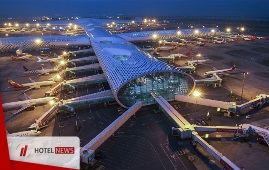
Airlines and airports in China are moving to another level of passenger service: They are embracing artificial intelligence and automation to provide the hyper-personalized self-service experience their passengers are demanding. According to the SITA 2019 China IT Insights, China’s airlines and airports are using these technologies to expand mobile services and automating the journey with self-service every step of the way. A key technology that is attracting investment is artificial intelligence (AI). SITA’s China IT Insights reveals that 88% of both airlines and airports are planning major programs, or R&D, with AI by 2022 and they are focusing on virtual agents and chatbots. This investment matches the demands from passengers; SITA’s research of passengers in China shows that 64% of them want a digital travel concierge. Already nearly half (43%) of airlines in China have AI-driven chatbot customer services and the planned investment should see the availability of them rising quickly over the coming years. May Zhou, Vice President and General Manager of SITA China, speaking at the SITA China Air Transport IT Summit in Nanning, said: “China’s airlines and airports have a strong record in embracing technology and automation to drive efficient operations and high levels of passenger services. Now they are moving to the next level where they will harness artificial intelligence to deliver more services, faster and to more people.” For passengers of China’s airlines and airports, self-service has reached a strong level of maturity, but a step-change is coming as biometrics is being adopted. Today, 27% of airports have self-boarding gates using biometrics with travel documents but in just three years this will jump to 66%. And more than half of the airports have plans for secure single biometric tokens for all touch points by 2022. Airlines too are committing to self-boarding gates using biometrics with ID, 60% are planning to use them driving a secure and seamless passenger experience right through the airport with the next three years. Zhou added: “The adoption of self-service by passengers across China has been very encouraging for airlines and airports. At SITA, we see many in the industry who are now ready and planning to add biometrics to bring self-service to the next level.” Mobile services are vital to meet China passengers’ demands and by 2022, all airlines and 93% of airports are planning investments in them. Services including flight discovery, airline offers, check-in and flight status notifications via mobile are already provided by all airlines. One fifth are also using mobiles to sell newspapers, magazines and movies/TV to passengers. Airports too are investing in mobile services to offer a more personalized experience for passengers. Services including, notifications about flight and airport status, and customer relationship management are well established and are offered by up to 81% of airports. Keeping the passenger informed and connected is not only what China’s airports are providing via mobile, they are also facilitating mobile payments. Close to three quarters enable passengers to buy airport services and allow cashless payments via mobile. This hyper-personalized service via mobile confirms it as a vital tool for China passengers. The report highlights that blockchain technology is another key area of investment for airlines, today only 24% have major programs, or R&D, planned but this is set to jump to 80% by 2022. This is in line with the recent trends and commitments to blockchain technology in the country.
Create: Jan 7, 2020 Edit: Jan 7, 2020 International News
New YouGov data shows one in five tourists are now more interested in visiting Saudi Arabia for a vacation and according to the Saudi Commission for Tourism and National Heritage, China, UK, Malaysia, United States and Canada top the list of new arrivals since the launch of its first tourism visa. New YouGov research has identified a rise in tourism interest in Saudi Arabia from around the world, with one in five tourists more likely to visit Saudi Arabia for a vacation now than five years ago. The YouGov research surveyed 9,521 people across the USA, China and five key markets in Europe, revealed a growing interest in visiting Saudi Arabia. The data coincides with the Saudi Commission for Tourism and National Heritage (SCTH) revealing its top inbound source markets since Saudi Arabia's opened its doors to international tourism. Since the launch of the new tourism visa in September, visitors from China, UK, Malaysia, United States and Canada have topped the list of new arrivals welcomed into Saudi Arabia. Saudi's historic sites appear to be an important attraction for tourists to the Kingdom. Amongst those surveyed by YouGov, over one in five (22%) are keen to visit Jeddah's historic old town, a UNESCO World Heritage Site. Meanwhile, another UNESCO site, previously only known to a few travellers, is gaining a following amongst Chinese millennials. Al Ula now tops the list of destinations in the Arab world of a third of Chinese tourists under the age of 35. Italians top the list with 35% surveyed saying they would be more likely to visit Saudi Arabia following the new visa launch. British tourists were 15% more likely just ahead of Americans at 14%. The research also points to new opportunities for multi destination tourism growth. Of all respondents 73% reported a preference to visit several destinations rather than stay in one location. Arab League Tourism Ministers Meeting The research is released as Saudi Arabia takes on the presidency of the Arab League Tourism Ministers Meeting at the end of a historic year for the Kingdom. Tourism Ministers from across the Arab world met earlier this month for the 22nd Annual Arab Tourism Ministers Meeting. During the meeting they discussed opportunities for regional-wide tourism offerings and unified strategies for sustainable growth of the sector to benefit local communities and the environment. His Excellency Ahmad bin Aqil Al Khatib Chairman of the Board of Directors of the Saudi Commission for Tourism and National Heritage (SCTH) said: "This year marked the historic moment of Saudi Arabia opening its doors to the world. We are welcoming more visitors and investors than ever before. To those thinking of visiting Saudi Arabia in 2020, you won't find a warmer welcome anywhere in the world."
Create: Jan 6, 2020 Edit: Jan 6, 2020 International News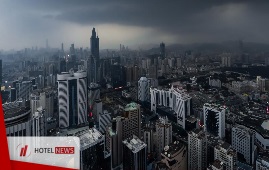
The South East Asia (Indonesia, Malaysia, Myanmar, Philippines, Singapore, and Vietnam) lodging industry experienced mixed sentiments for 2019. Despite growth in tourism arrivals, the ever-changing political climate, mercurial global economic conditions, and growth in accommodation supply are few of the many reasons that continue to put downward pressure on several markets. Even with the headwinds, the underlying dynamics behind demand growth appear to be resilient and are expected as such going forward. The global economic growth is anticipated to end off at a rate of 3.0% in 2019, before gradually recovering back to the 2018 performance of 3.6% in 2021. Nonetheless, South East Asia remains the fastest-growing region in the world and is projected to grow at a rate of 5% in 2019. While the global Consumer Price Index (CPI) forecast remains relatively stable, South East Asia’s CPI has been projected to abate from 3.4% in 2018 to 2.8% in 2019, mainly held back by slow wage growth and prolonged trade tensions. However, South East Asia’s unemployment rate remains at a low 3.5% and is expected to prevail at the same level through 2021. The region’s inflation is anticipated to rise in 2021 on the back of looser monetary conditions and resilient domestic demand. As of year-to-date (YTD) Q3 2019, South East Asia registered a growth rate of 12.3% in international visitor arrivals, a 2.1% increase from the same time last year. While Malaysia recorded year-over-year (YOY) growth of 3.7% as of YTD September 2019, a five-year compound annual growth rate (CAGR) of 0.1% reveals that the country continues to miss tourism goals and struggles to attract more tourists. The South East Asia (Indonesia, Malaysia, Myanmar, Philippines, Singapore, and Vietnam) lodging industry experienced mixed sentiments for 2019. Despite growth in tourism arrivals, the ever-changing political climate, mercurial global economic conditions, and growth in accommodation supply are few of the many reasons that continue to put downward pressure on several markets. Even with the headwinds, the underlying dynamics behind demand growth appear to be resilient and are expected as such going forward. The global economic growth is anticipated to end off at a rate of 3.0% in 2019, before gradually recovering back to the 2018 performance of 3.6% in 2021. Nonetheless, South East Asia remains the fastest-growing region in the world and is projected to grow at a rate of 5% in 2019. While the global Consumer Price Index (CPI) forecast remains relatively stable, South East Asia’s CPI has been projected to abate from 3.4% in 2018 to 2.8% in 2019, mainly held back by slow wage growth and prolonged trade tensions. However, South East Asia’s unemployment rate remains at a low 3.5% and is expected to prevail at the same level through 2021. The region’s inflation is anticipated to rise in 2021 on the back of looser monetary conditions and resilient domestic demand. As of year-to-date (YTD) Q3 2019, South East Asia registered a growth rate of 12.3% in international visitor arrivals, a 2.1% increase from the same time last year. While Malaysia recorded year-over-year (YOY) growth of 3.7% as of YTD September 2019, a five-year compound annual growth rate (CAGR) of 0.1% reveals that the country continues to miss tourism goals and struggles to attract more tourists. Vietnam achieved the highest CAGR of 15.4%, followed by Indonesia (12.4%) and Myanmar (9.2%). The strong tourism demand has been driven by an increase in flight connectivity and concerted tourism efforts by the government, such as easing of visa restrictions, developing infrastructures, supporting tourism enterprises, and the promotion of tourism campaigns. Looking forward, the Indonesian government has actively promoted its "10 New Balis" program, established in 2018, to develop and promote several destinations beyond Bali, including Mandalika in West Nusa Tenggara, Thousand Islands in Jakarta, Tanjung Lesung in Banten, Tanjung Kelayang in Bangka Belitung, Borobudur Temple in Central Java, the Bromo Tengger Semeru National Park in East Java, Labuan Bajo in East Nusa Tenggara, Wakatobi in Southeast Sulawesi, and Morotai in North Maluku. In conjunction with Visit Malaysia 2020 (VM2020), Tourism Malaysia has recently launched a digital initiative, the VM2020 Website Campaign, which aims to entice and showcase various destinations in the country to more tourists. In early 2019, the Myanmar government launched the Myanma Tourism Bank to spur development in its growing tourism sector by offering low interest loans to tourism enterprises. In the Philippine government’s National Tourism Development Plan, the country seeks to spur growth and development through foreign direct investment by showcasing attractive areas in the Tourism Enterprise Zones. Singapore has also announced mega projects to fuel long-term tourism including the Greater Southern Waterfront development, Mandai eco-tourism hub, Jurong Lake District’s seven-hectare tourism development, and the expansion of the two integrated resorts. Apart from an effort to further develop less well-known tourist sites and diversify tourism products, Vietnam will soon launch a new tourism marketing campaign, #VietnamNOW, to build awareness of the country’s tourism assets andevents. Vietnam achieved the highest CAGR of 15.4%, followed by Indonesia (12.4%) and Myanmar (9.2%). The strong tourism demand has been driven by an increase in flight connectivity and concerted tourism efforts by the government, such as easing of visa restrictions, developing infrastructures, supporting tourism enterprises, and the promotion of tourism campaigns.
Create: Jan 6, 2020 Edit: Jan 6, 2020 International News
Embassy Suites by Hilton, a global brand of upscale, all-suite hotels from Hilton (NYSE: HLT), announced today the opening of a new hotel located in the Jonesboro area. Owned by Jonesboro Hotel Partners LLC and professionally managed by O’Reilly Hospitality Management LLC, the hotel is perfectly situated to allow guests easy access to businesses, shopping and entertainment. Embassy Suites by Hilton prides itself on offering guests an approachable and stress-free experience at each of its spacious, all-suites hotel properties. The stunning Embassy Suites by Hilton Jonesboro Red Wolf Convention Center is conveniently located on the Arkansas State University campus next to First National Bank Arena and Centennial Bank Stadium. The hotel is less than 10 minutes away from the Mall at Turtle Creek, Sage Meadows Country Club and Golf Course and attractions of downtown Jonesboro. Offering 203 of Embassy Suites by Hilton’s traditional upscale two-room suites, the hotel features a luxurious, warm lobby and bar area with unique water features, as well as Houlihan’s Restaurant, which serves delicious American cuisine on property. “Embassy Suites by Hilton is committed to exceeding guests’ expectations through value-added amenities and spacious suites,” said Alan Roberts, global head, Embassy Suites by Hilton. “Whether travelers are visiting a student, taking a tour, catching a football game at Arkansas State University or simply taking in the natural beauty of Jonesboro, they will be thrilled with our latest hotel that delivers all they love about the brand at an unbeatable location.” Embassy Suites by Hilton Jonesboro Red Wolf Convention Center welcomes guests to spread out in its spacious suites and enjoy a free, cooked-to-order breakfast each morning, complimentary Wi-Fi for Hilton Honors members and free drinks and snacks each night at the manager’s Evening Reception. Embassy Suites by Hilton provides customer service that always anticipates travelers’ needs and delivers what matters most. “We are very excited for Embassy Suites, Red Wolf Convention Center and Houlihan’s Restaurant to serve as a ‘living laboratory’ for Arkansas State University (ASU) that will be the hub for internships and hands-on learning opportunities for multiple aspects of the business and marketing schools, as well as the centerpiece in the development of ASU’s hospitality program,” said Tim O’Reilly, CEO of O’Reilly Hospitality and an owner of the hotel. “Our partnership with Arkansas State University and the City of Jonesboro is a very positive relationship for our company and all parties involved.” Additional hotel amenities include 40,000 sq. ft. of meeting space, including the 15,000-sq.-ft. Arvest Ballroom (the largest ballroom in Northeast Arkansas), a 24-hour convenience store, business center, fitness center and an indoor pool. Each suite is equipped with complimentary Wi-Fi, a living area, coffeemaker, microwave, mini refrigerator and two HDTVs with movies for guests to stay entertained. Embassy Suites by Hilton Jonesboro Red Wolf Convention Center is part of Hilton Honors®, the award-winning guest-loyalty program for Hilton’s 17 distinct hotel brands. Hilton Honors members who book directly through preferred Hilton channels have access to instant benefits, including a flexible payment slider that allows members to choose nearly any combination of Points and money to book a stay, an exclusive member discount that can’t be found anywhere else and free standard Wi-Fi. Members also enjoy popular digital tools available exclusively through the industry-leading Hilton Honors mobile app, where Hilton Honors members can check-in, choose their room and access their room using a Digital Key.
Create: Jan 4, 2020 Edit: Jan 4, 2020 International News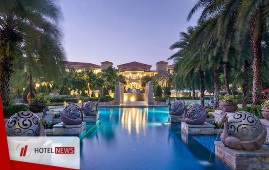
JW Marriott, part of Marriott International, Inc., today announced the opening of JW Marriott Sanya Haitang Bay, located on the Haitang Bay, the National Coast of China. The property marks JW Marriott’s second resort on Hainan and eighteenth hotel in Greater China, seamlessly blending in with the lush landscape of Haitang Bay and illustrating the beguiling charm of the entire coast. Adjacent to Yalong Bay National Tourism Resort, Haitang Bay boasts stunning scenery including tropical forests, white sandy beaches and shimmering waters. A 40-minute drive from Sanya Phoenix International Airport, the area is home to numerous tourist attractions including Wuzhizhou Island, Sanya Haichang Fantasy Town, Nanshan Temple and the Wanda International Cinema, among others. The new JW Marriott Sanya Haitang Bay is located on a 21.8-kilometer-long shoreline, providing a luxury escape for travelers who come to feel present in mind, nourished in body and revitalized through the brand’s curated programming. “We are truly delighted to continue to expand our brand portfolio in Sanya, China.” said Mitzi Gaskins, Vice President & Global Brand Leader, JW Marriott. “JW Marriott Sanya Haitang Bay is bringing a modern, luxurious setting to our guests in Sanya, as well as encouraging them to embrace the present and savor life to the fullest in a mindful and nourishing environment.” Inspired by the theme of ‘stone’, the subtle design by Smallwood, Reynolds, Stewart, Stewart (SRSS) connects guests at JW Marriott Sanya Haitang Bay with nature through endless arcades, ceramic accents, an octagonal fountain and peacock pavilion that reflect the hotel’s luscious backdrop. The property’s 142 guestrooms and 18 villas, ranging from 735 sq. ft. to 7,180 sq. ft., feature private balconies and combine modern designs with genuine aesthetics to create the optimum sense of relaxation. Two exquisite dining facilities ensure the ultimate epicurean experience for travelers. Guests can enjoy live cooking presentations in JW Kitchen’s all-day open-kitchen restaurant or relax in the tropical ambiance of the JW Lounge, featuring signature cocktails and wines from around the world. Additionally, JW Marriott Sanya Haitang Bay highlights its commitment to naturally-inspired dining through its JW Garden to offer fresh, local ingredients for authentic farm-to-table dining experiences, hands on cooking classes and specialty drinks. JW Marriott Sanya Haitang Bay is the perfect venue for hosting romantic weddings, corporate meetings and special events with over 37,600 sq. ft. of meeting space, 86,000 sq. ft. of outdoor lawn, flexible seating solutions and comprehensive business facilities. Guests can rejuvenate at the fully-equipped Health Club featuring over nine different-sized pools, or enjoy pampering at the luxurious Spa by JW. “The increase and transformation of the tourism market within China and specifically Hainan is significant, with the island now housing 23 hotels, covering different lifestyle needs,” said Henry Lee, President, Greater China, Marriott International. “The expansion of the JW Marriott brand in Sanya allows us to add unique offerings and enriching, thoughtfully-curated experiences for guests, leaving them with unforgettable memories.”
Create: Jan 4, 2020 Edit: Jan 4, 2020 International News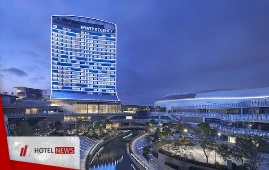
Hyatt Hotels Corporation (NYSE: H) today announced the opening of Hyatt Regency Hengqin in Zhuhai, Guangdong Province, China. With 493 rooms, six dining outlets, and 40,440 square feet (3,757 square meters) of event space, the hotel is designed for business and leisure guests alike seeking a seamless, intuitive experience in the city. Situated in the heart of the dynamic and fast-growing Greater Bay Area of southern China, Hyatt Regency Hengqin is part of the vibrant Novotown complex, which features an impressive array of attractions including Lionsgate Entertainment World, Natinoal Geographic Explorer and more. The hotel is also within easy reach of the Hong Kong – Zhuhai – Macau Bridge, offering convenient access for guests traveling throughout the region. “We are thrilled to announce the opening of Hyatt Regency Hengqin,” said William Yuen, general manager of Hyatt Regency Hengqin. “As a new, international branded hotel in Hengqin, Zhuhai, we are excited to offer superior comfort and excellent service at a convenient location.” Guestrooms Hyatt Regency Hengqin has a total of 493 guestrooms, including 55 suites, ranging from and from 430 to 2,583 square feet (40 to 240 square meters). Subtle design touches include soft warm timber blinds, giving an overall feeling of natural comfort. Regency Club guests enjoy exclusive access to our club lounge offering a range of complimentary amenities including concierge service, private check-in and check-out, delicious bites served daily, and a dedicated meeting room. Drinking and Dining Boasting six restaurants and bars, the hotel offers a wide range of global cuisine. Market Café is a self-service, market-style restaurant where diners can watch their food being prepared by expert chefs at live cooking stations. La Cucina is an extension of Market Café, bringing the delicious flavors of Italy to Hengqin, with a variety of popular European dishes. The Lounge provides a relaxed atmosphere to decompress and features a vast selection of specialty teas, coffees, cocktails and snacks. In early spring of 2020, the hotel will open three additional food & beverage outlets. Xiang Yue Chinese restaurant will specialize in the delicate flavors of Cantonese cuisine. The restaurant will feature an open kitchen, reminiscent of a hawker-style eatery, allowing diners to watch chefs prepare dishes to order. With a series of fish tanks showcased throughout the dining space, the menu highlights fresh seafood and top-quality ingredients. Pool Pavilion will be a relaxing, al fresco dining venue delivering sumptuous barbecue and craft cocktails. The 180° rooftop bar, will be located on the 23rd floor, offering with a 180° outdoor landscape and stunning views. Here, visitors can enjoy the charm of Hengqin under the stars with wine, cigars and music. Meetings & Events Whether hosting a wedding, product launch, large-scale conference, or an intimate meeting, event planners will find their every need catered for at Hyatt Regency Hengqin. The hotel boasts a total of 40,440 square feet (3,757 square meters) of event space, including the 17,437 square foot (1,620 square meter) Regency Ballroom, which features an outdoor garden, floor-to-ceiling windows, natural lighting, and can accommodate up to 1,300 guests. The Regency Salon, a premium event venue with 10,258 square feet (953 square meters) of space, offers two open kitchen display areas. Three additional multipurpose rooms provide an ideal space for small groups and meetings.
Create: Jan 4, 2020 Edit: Jan 4, 2020 International News
InterContinental Hotels Group has signed a management agreement with current partner, JSC 'Tverskaya 24', to open Hotel Indigo® Moscow – Tverskaya by the end of 2020. Hotel Indigo was established in 2004 and is growing at pace as one of the leading boutique brands in the world, with a goal of doubling its global presence over the next three to five years. With a current footprint of over 100 hotels across 19 countries, the signing of Hotel Indigo Moscow – Tverskaya brings the upscale brand to Europe’s second largest city, boasting approximately 100 guest rooms, a gym and lobby bar. Just as no two places are alike, no two Hotel Indigo properties are the same. Each hotel draws inspiration from the local neighbourhood, culture and popular trends in food, drink and design to create a warm and vibrant atmosphere. The Hotel Indigo Moscow – Tverskaya will be the second Hotel Indigo property in Russia. Located along Tverskaya Street, the main street of the city, Hotel Indigo Moscow - Tverskaya is a historical building, that will be transformed into an upscale boutique hotel that is stylish yet approachable. Surrounding the hotel are back alleys and picturesque side streets linking the city together and making major attractions easily accessible. In close proximity to the famous Red Square, The Kremlin and the State Tretyakov Gallery, Hotel Indigo Moscow – Tverskaya is perfectly positioned for travellers to immerse themselves in the history and stunning architecture of the city. Moscow is the largest city in Russia, and a major economic and cultural hub, which drives the city’s hotel demand. The Hotel Indigo brand is perfectly positioned for the market, as the leisure demand continues to grow and the corporate travellers are seeking new experiences to differentiate their stays. The convenient location will provide guests with the opportunity to explore the historical neighbourhood from both inside the hotel and out. Aron Libinson, Vice President, Operations and Development, Russia, CIS & Georgia commented: “We’re very excited to sign the second Hotel Indigo here in Russia. I am confident guests will love this new upscale boutique offering in the heart of Moscow. IHG have a strong presence in Russia and we’re continuing to grow at pace. There is a lot of potential for brands in this market and we have the perfect portfolio to meet the demand for mainstream and upscale hotels. With 5 signings in the past month, I’m happy with the progress we’re making with our growth strategy across the entire Russia, CIS & Georgia region.”Alexander Lebedev, General Director of the owning company JSC “Tverskaya 24” commented: “We are looking forward to launching Hotel Indigo Moscow – Tverskaya and continuing to grow our partnership with IHG. Their powerful systems drive strong performance throughout our hotels, so we are excited to continue to work together. Moscow is such a prominent city in Europe, and we know that introducing a brand solely focused on culture and neighbourhood will bring a new proposition that guests will love.”
Create: Dec 30, 2019 Edit: Jan 13, 2020 International News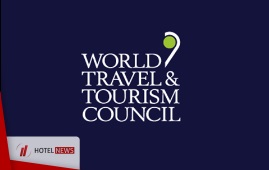
International visitor spending more important to cities than it is to countries, nine out of 10 top fastest growing cities in past decade are in emerging and developing countries and cities over reliant on domestic or international demand are more exposed to economic and geopolitical risks. The World Travel & Tourism Council (WTTC), which represents the global Travel & Tourism private sector, today released its comprehensive Cities Report for 2019. The report focuses on 73 major tourism city destinations, providing estimates of the GDP and employment directly generated by the Travel & Tourism sector, and highlights successful initiatives, strategies and policies that have been implemented. With more than half (55%) of the world’s population living in urban areas – due to increase to 68% over the next 30 years – cities have become the hubs for global economic growth and innovation, while also attracting more people who want to live and do business. The report reveals these 73 cities account for $691 billion in direct Travel & Tourism GDP, which represents 25% of the sector’s direct global GDP and directly accounts for over 17 million jobs. Additionally, in 2018, direct Travel & Tourism GDP across the cities, grew by 3.6%, above the overall city economy growth of 3.0%. The top 10 largest cities for direct Travel & Tourism contribution in 2018 offer diverse geographic representation, with cities such Shanghai, Paris, and Orlando all sitting in the top five. International visitor spending is often more important to cities than it is to countries overall. For example, Riyadh had international visitor spending accounting for 86% of total spending, while in Saudi Arabia as a whole, international visitor spending accounts for 45% of total spending. International visitors accounted for almost half (45%) of tourism spending across the 73 cities in the study, and an average spend of 29% for economies worldwide. Revenues from international visitors, will in some cases pay for city infrastructure projects, the provision of public workers and services that improve the quality of life for residents. For example, in London, international visitors spent $17.5 billion in 2018, nearly twice as much as the operating costs of Transport for London, and near four times the amount than the total expenditure for policing and crime within the city. Furthermore, international visitors in New York spent $21 billion last year, which is 3.8 times higher than the costs of the NYPD, and nearly twice the budget for city schools. The report also reveals all but one of the 10 global cities with the highest direct Travel & Tourism growth over the past decade, are in emerging and developing economies such as China, Turkey and the Philippines. Infrastructure development and prioritisation of tourism, has been a key driver of Travel & Tourism growth. The projected trends for 2018-2028 continue in this way, with all 10 coming from emerging and developing countries such as Morocco, India, Vietnam and Indonesia. According to the report, cities with an overreliance on domestic or international demand are more exposed to economic and geopolitical shocks. Some large Brazilian and Chinese cities which are highly reliant on domestic demand, could be exposed to changes in the domestic economy. On the other hand, cities which are more reliant on international demand and/or particular source markets, may be vulnerable to external disruptions. It also highlights several cities which demonstrate a more balanced split between domestic and international demand, including Cancún, Munich, Cairo and New York, which despite their geographical differences, all maintain a near perfect 50:50 split. Furthermore, a high degree of seasonality can also, at times put pressure on infrastructure, due to the heightened demand during a narrow timeframe. WTTC President & CEO, Gloria Guevara said: “Cities are an essential part of the Travel & Tourism sector, both culturally and economically, and their significance is set to increase over time. Achieving sustainable growth in cities requires reaching far beyond the sector itself, and into the broader urban agenda. As we go forward, the Travel & Tourism sector must be integrated into all aspects of a cities’ planning agenda. To drive true economic impact that can translate seamlessly into social benefits, a city must engage with all stakeholders, across the public and private sector, in order to establish the cities of the future. There is an opportunity to create long-term, sustainable change that can create real change for communities, especially within cities.” Read the WTTC City Travel & Tourism Impact Report 2019 here.
Create: Dec 24, 2019 Edit: Dec 24, 2019 International News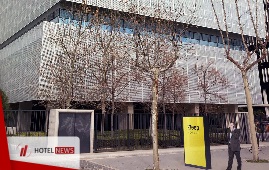
Deutsche Hospitality has signed an agreement for the first Zleep Hotel in Spain which will position the young economy brand outside Scandinavia for the very first time. In late 2021, the Zleep Hotel Madrid Airport will open close to the capital’s international airport and the Principe Felipe Congress Centre. It will offer 280 rooms and will join the Steigenberger Hotel & Resort Camp de Mar on Mallorca to become the second Deutsche Hospitality hotel in Spain. "For Deutsche Hospitality, Spain is a highly attractive market," says Thomas Willms, CEO, Deutsche Hospitality, "We see further potential here not only for our resort hotels, but especially for hotels in the business and economy sectors. With Zleep we have the ideal entry-level product into our brand world, offering quality, service and design at an affordable price." When Deutsche Hospitality acquired Zleep Hotels at the start of 2019, it bolstered its competitive position and added an economy segment brand to the group’s portfolio at the same time. Twelve hotels in Denmark and Sweden are currently part of the Zleep Hotels portfolio, further hotels are at the planning stage. "The Zleep Hotels brand has grown since its inception in 2003 with a young and dedicated team to become a well-known, successful hotel brand in Scandinavia," explains Peter Haaber, founder and CEO of the brand, adding, “We are looking forward to opening our first hotel in Spain and to launching into a new market.” "With the Zleep Hotel in Madrid, we offer price-conscious holidaymakers and business travelers who value design, quality and sustainability an exciting hotel offer in the Spanish capital. We are convinced that the Zleep community will find many new fans," says Robert Boller, Managing Director Zleep Hotel GmbH. All the signs indicate that there is more growth to come. Deutsche Hospitality currently has plans in the pipeline to open 30 further hotels under its various brands both in Germany and abroad.
Create: Dec 24, 2019 Edit: Dec 24, 2019 International News
Hilton announced the opening of Canopy by Hilton Hangzhou Jinsha Lake, a 10-storey, 179-room hotel that provides energizing, positive stays for business travelers and cultured vacationers. The waterfront hotel is conveniently located in the heart of Qiantang New District of Hangzhou East, offering a unique urban resort experience coupled with the city’s best views of Jinsha Lake. Canopy by Hilton Hangzhou Jinsha Lake marks the brand’s twelfth property and is owned by Vangoo Group and managed by Hilton. “With the rapid development of the high-tech and manufacturing industry and rich cultural heritage, Hangzhou Qiantang New District has immense potential in attracting leisure and business travelers,” said Qian Jin, area president for Greater China and Mongolia, Hilton. “Following the huge success of the brand’s Asia Pacific debut in Chengdu, we are thrilled to announce the second opening in the region in Hangzhou. The property underscores our commitment to maintain strong growth momentum in Greater China and continue to deliver positive experiences to our guests.” Once a wetland for farmers more than 2,200 years ago, the neighborhood where Canopy by Hilton Hangzhou Jinsha Lake resides has transformed into a hotbed for technological innovation and a growing destination for business events. Ideally located by the lake, the hotel is only a few blocks away from a shopping mall, dining outlets and the soon-to-launch Jinsha Grand Theatre, offering guests seeking local experiences the perfect base to discover local cuisine or enjoy a relaxing stroll along the lake’s shore. Guests can enjoy direct access to Hangzhou Metro Line 1 for quick connections to business districts, major scenic destinations and Hangzhou East Railway Station, and Xiaoshan International Airport is located only 25 kilometers away, just 30 minutes by car. “Through the neuroscience research we conducted in partnership with Nielsen earlier this year, we found that today’s Chinese travelers seek a taste of authentic local experiences during their travels, which is exactly what Canopy by Hilton offers at this new location,” said Gary Steffen, global head, Canopy by Hilton. “The hotel will immerse guests in Qiantang New District’s natural beauty and heritage with its architectural and design elements.” Canopy by Hilton Hangzhou Jinsha Lake has been carefully designed to incorporate the unique art culture of Hangzhou. Upon arrival at the hotel lobby, Canopy Central, guests will be greeted by a white ceramic centerpiece floating above the lobby inspired by the Osmanthus, the city’s flower, which is traditionally planted in front of local homes and known as a “golden welcome” to guests. The 3D-grafted decorative wall panels along the hotel corridors feature continuously changing illustrations of aquatic plants and marsh birds, immersing guests in the nature of Hangzhou.
Create: Dec 23, 2019 Edit: Dec 23, 2019 International News
